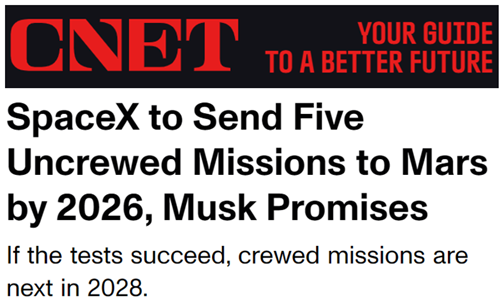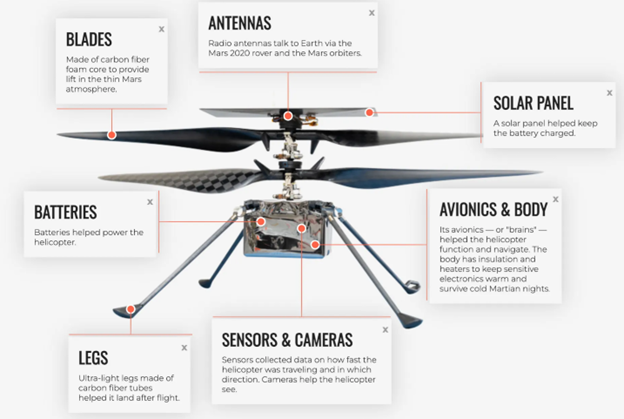 |
| By Michael A. Robinson |
Maybe David Bowie really was on to something after all.
His critically acclaimed 1972 concept album “The Rise and Fall of Ziggy Stardust and the Spiders from Mars” reveled in dreamy science fiction.
To add to the whole space-creature vibe, the next year he followed it with a hit single, “Life on Mars.” At the time, it all seemed like a rock star’s extravagant fantasy.
But as the saying goes … that was then, and this is now …

NASA recently said it found ancient microbes on Mars that may point to a form of early life.
Furthermore, geophysicists also found evidence of a large underground reservoir of liquid water that’s too deep to tap but may hold the possibility of some form of life there.
In other words, there’s no shortage of breakthroughs in the New Space Race and our drive to colonize Mars as part of the roughly $1 trillion space economy.
Academic and NASA researchers had already found clear evidence that there is in fact plenty of liquid water on the planet.
This is important because it means astronauts may be able to use water as they explore the planet further with the aim of at least building bases there.

For roughly the last decade, space experts knew of Martian polar ice caps. But how those could be tapped by humans or even robotic vehicles remained elusive.
The discovery comes as executives at SpaceX confirm they are working on developing human habitats like Martian cities.
They add that humans could see Mars with their own eyes as soon as 2028 … and live there by 2060.
A Nuclear Red Planet
While SpaceX gets much of the media attention regarding the future of Mars, NASA is no slouch in this department. Not by a long shot.
As you read this, the agency’s Perseverance rover is exploring Mars.
It has been doing so for more than three years now, sending back some dazzling photos.
Meanwhile, the agency that also operated a helicopter on Mars says it’s working on a nuclear reactor.

That reactor could eventually be used to power human developments needed to explore life on the planet, which lies 140 million miles from Earth.
To be sure, it’s all in the design phase. But events are unfolding faster than most investors know about.
Indeed, NASA plans to use the reactor first on the Moon where it is being designed and, eventually, will be built to sustain human development for at least a decade before the agency seeks to develop Mars.
The 40-kilowatt reactor is supposed to make power available for running lunar habitats, rovers, backup grids and science experiments.
It will provide electricity for the equivalent of powering 33 earth homes, a small but manageable space development.
One of the companies behind powering Mars has worked with NASA for decades.
I won’t name that company. But I will say it has a private partner that’s about to give NASA a big boost when it comes to getting into orbit more frequently and much more cheaply.
And if you check out this Private Investment Summit before we take it down tomorrow, you can ride this pre-IPO rocket for yourself.
Best,
Michael A. Robinson

